The dollar is the world’s leading reserve currency and the most widely used currency for international trade.
Stablecoins enable new rails for dollar-based transactions that settle faster, cheaper and more transparently.
I analysed onchain stablecoin activity to find out how the category is developing. Here are four key insights I found:
- Stablecoins currently drive more onchain value transfer than ETH and BTC
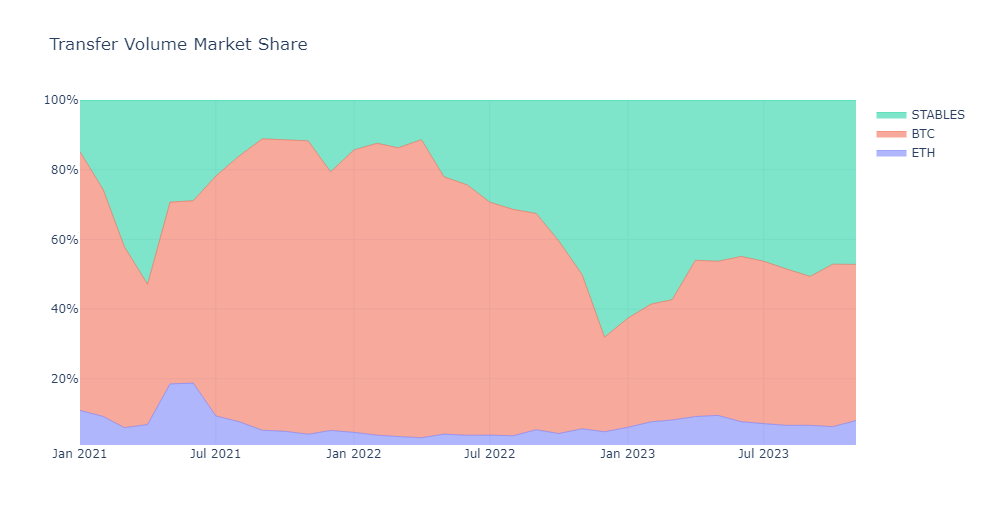
In November, there was $914B of Stablecoin transfer volume, $869B of BTC volume and $155B of ETH volume.
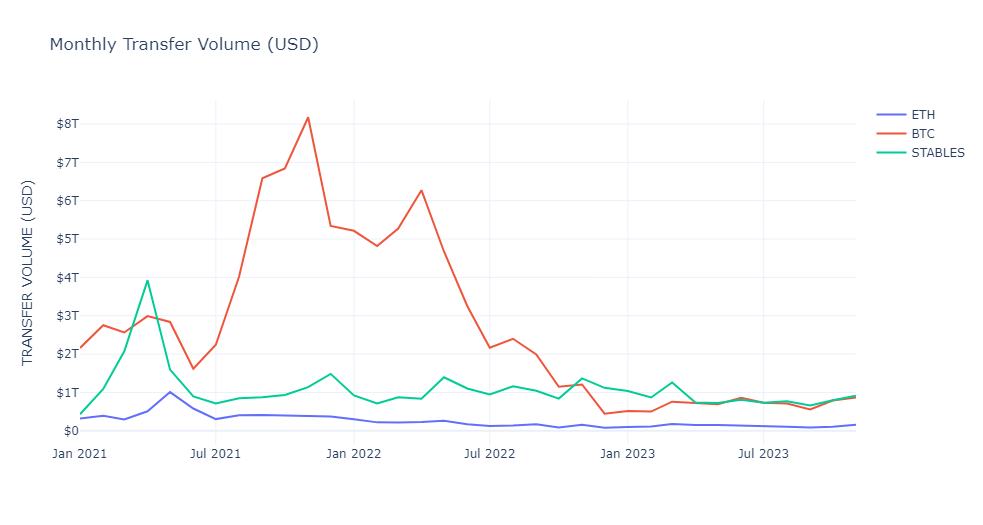
- In November, Ethereum had the highest stablecoin volume with transfers totaling $443B. Tron came in second with $358B. The other chains had significantly lower volumes; Arbitrum ranked third with $48B, and BSC ranked fourth with $38B.
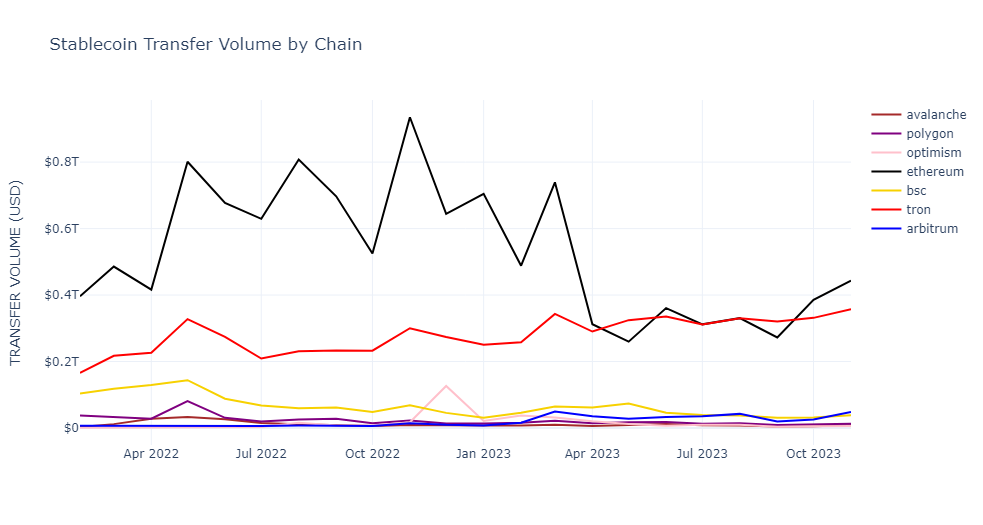
If you find this interesting, sign up for the 0xTrends email list! I'll send you monthly reports on fast-growing crypto products and trends ⚡
- During this bear market, the number of wallets sending stablecoins has consistently grown month-over-month.
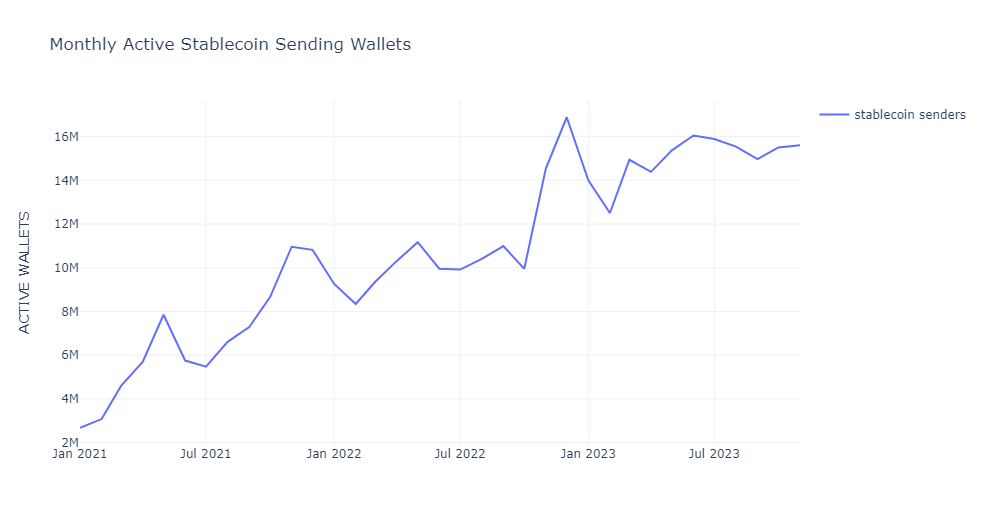
- The quarterly transfer volume of stablecoins is currently 56% of Visa's.
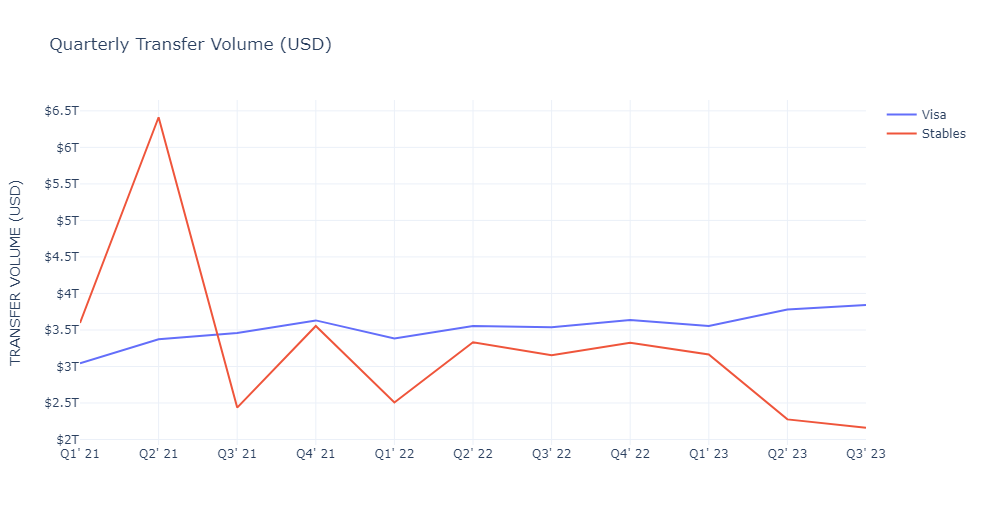
- ETH transfers on Ethereum, Optimism, Arbitrum (source: Allium dataset)
- BTC transfers on Bitcoin (source: Hildobby Dune Dashboard)
- Stablecoin transfers on Ethereum, Tron, Optimism, Arbitrum, Polygon, Avalanche (source: Allium dataset)
- Visa transaction volume (source: YCharts)
Apps
Here are three products in the category that I find interesting:
Accrue is a cross-border stablecoins payments app for African countries. Making payments across Africa is tedious and expensive. There's no continent-wide rail, payments take several days to settle, and there are a lot of high fees and shit exchange rates baked into the process.
Stablecoin apps have a lot of potential in regions where the traditional banking system is unreliable and has low penetration. To tackle opportunities like this, it's important to have teams that are physically present and deeply understand the payment landscape in their region. For instance, in Ghana, my home country, mobile money is more commonly used than traditional bank accounts. Accrue addresses supports easy on/offramping with mobile money, a feature that most exchanges lack.
Daimo is a stablecoin self-custody wallet that doesn't require users to store a seed phrase. Instead, private keys are generated in your phone's secure enclave, and you use your phone to sign transactions. Almost as if it were a hardware wallet. This is possible because Daimo deploys ERC-4337 smart accounts that can be set up to use any form of verification; in this case, the p-256 keys used by phones instead of the secp256k1 keys used by regular EOA wallets.
Account abstraction makes it possible to deliver self-custody experiences that have a user experience comparable to the best custodial experiences (abstracted gas fees, multiple verification methods, safety features like custom spending policies .etc). As stablecoin adoption grows, it's important that there are user-friendly self-custody options. I think ERC-4337 will play a big role here.
Bridge is an API that simplifies stablecoin<>fiat and stablecoin<>stablecoin conversions for developers. Some of the use cases they've been enabled, such as making payments in stablecoins that settle as fiat in the recipient's US bank account, are pretty awesome.